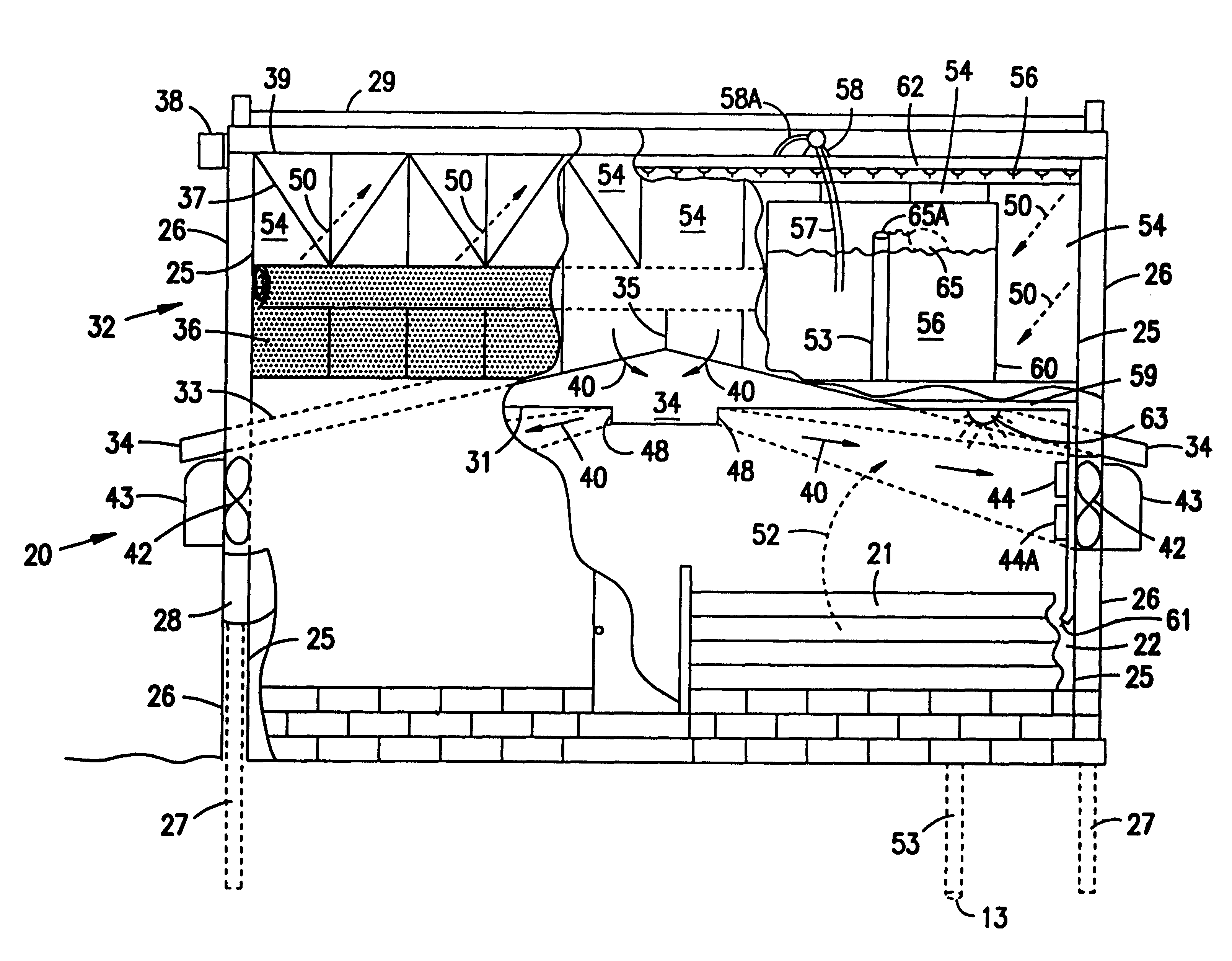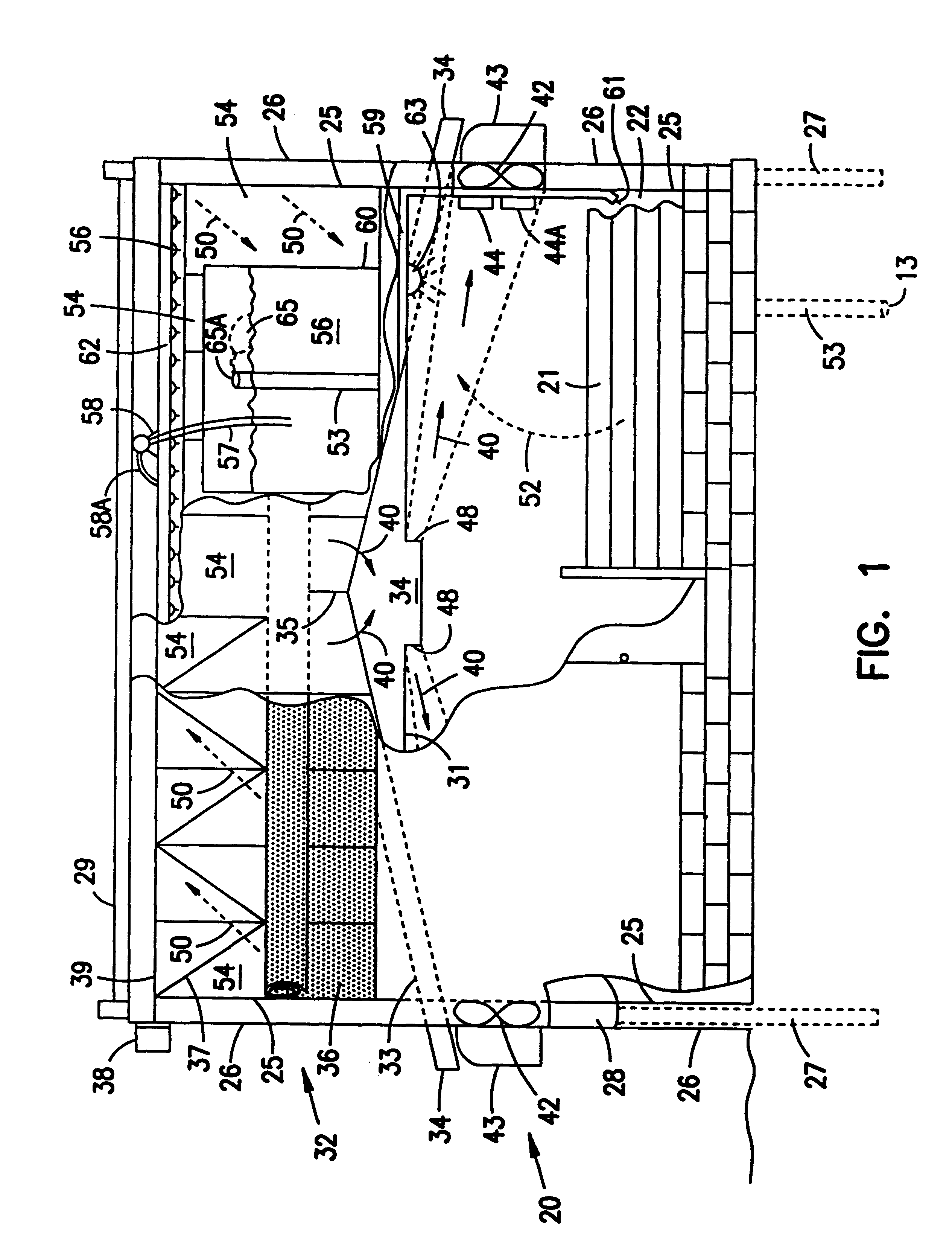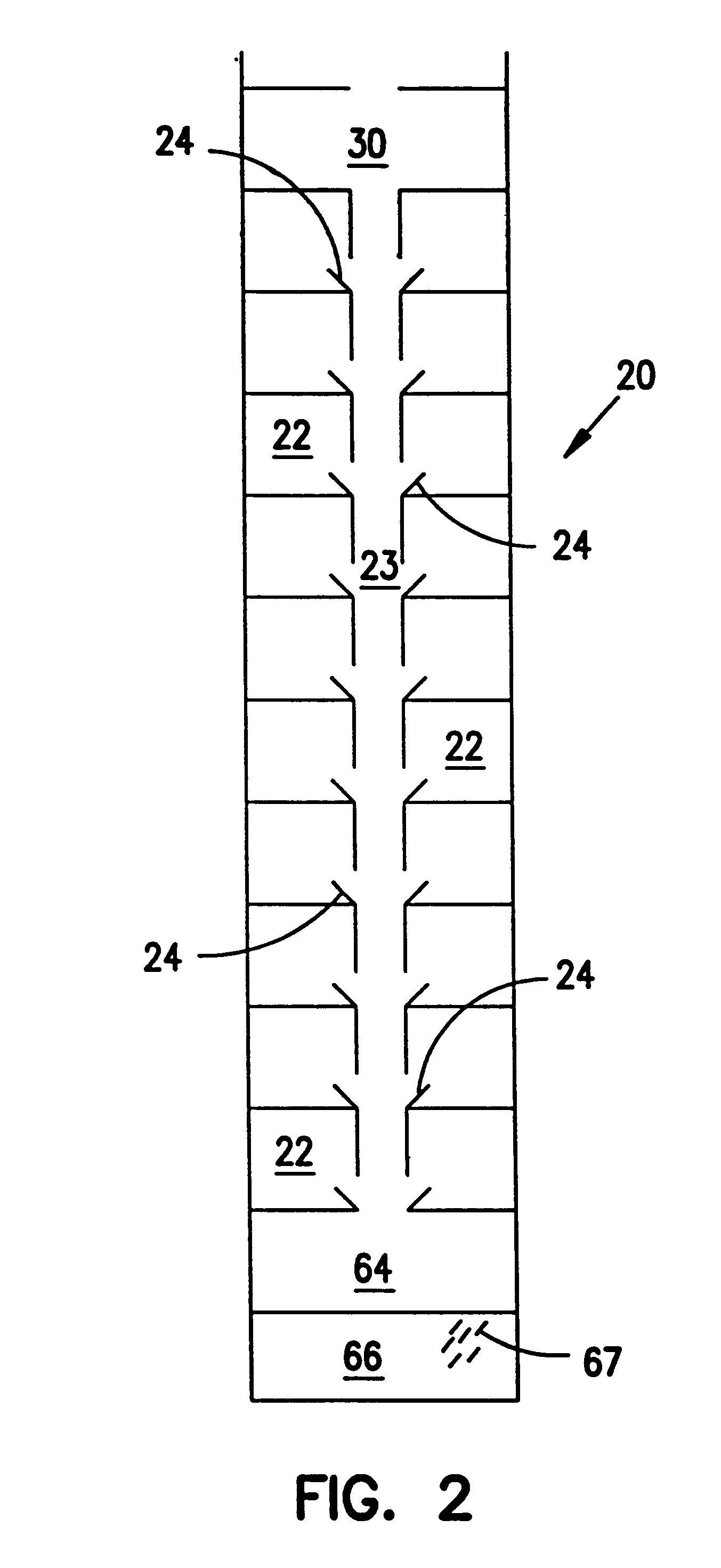Animal confinement shelter with accelerated decomposition of waste
a technology of accelerated decomposition and confinement shelter, which is applied in the field of hog operations, can solve the problems of virus and bacteria buildup, increase labor costs, and reduce growing efficiency
- Summary
- Abstract
- Description
- Claims
- Application Information
AI Technical Summary
Problems solved by technology
Method used
Image
Examples
Embodiment Construction
In order to keep conditions sanitary, while reducing odors and associated environmental problems, the waste control system of the present invention is designed to compost the pig waste continuously. FIG. 6 is a simplified flow diagram of a preferred embodiment of the present invention in which pig waste and fibrous material are composted to produce a useful end product. As shown in FIG. 6, at start-up, pig waste which has collected in a gutter system located in a building is released into a tank. After a period of time, the pig waste is pumped out of the tank and sprayed into a bin area which has been loaded with fibrous material prior to start-up. The pig waste and fibrous material are mixed together in the bin area by a bin blending conveyor. The fibrous material and pig waste leave the bin area as a mash and enter the main portion of the building. The mash is slowly moved and mixed by a central blending conveyor so that it can compost. The compost or end product is transported ou...
PUM
 Login to View More
Login to View More Abstract
Description
Claims
Application Information
 Login to View More
Login to View More - R&D
- Intellectual Property
- Life Sciences
- Materials
- Tech Scout
- Unparalleled Data Quality
- Higher Quality Content
- 60% Fewer Hallucinations
Browse by: Latest US Patents, China's latest patents, Technical Efficacy Thesaurus, Application Domain, Technology Topic, Popular Technical Reports.
© 2025 PatSnap. All rights reserved.Legal|Privacy policy|Modern Slavery Act Transparency Statement|Sitemap|About US| Contact US: help@patsnap.com



